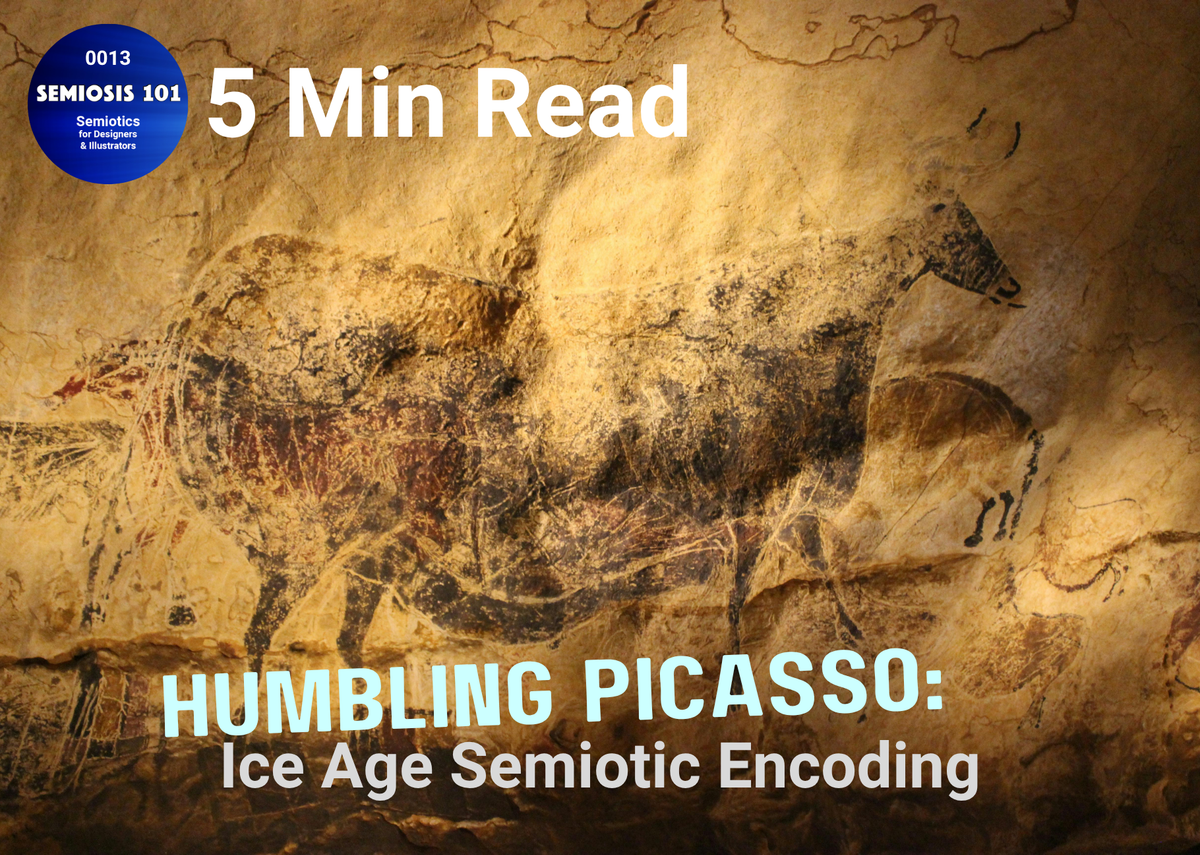BLOG 13: Humbling Picasso - Ice Age Semiotic Encoding

Semiosis 101 - 5 minute semiotic read
Think of your grandparents’ generation. Then imagine at least 1600 generations before them. You are back in the European Stone Age, a land of vast glaciers, steppes and mammoths. Bands of modern humans successfully lived there in small hunter-gatherer nomadic communities.
These humans visually communicated encoded information of socio-cultural importance in form of exquisite painted friezes of beautifully observed Ice Age animals. These Stone Age painters’ brains were exactly the same as our brains. Their technology and material culture was just different to ours. Their cave paintings were rediscovered over the last two hundred years.
There is an apocryphal tale that Pablo Picasso, after visiting the cave paintings at Lascaux cave, stated in awe of what he saw,
“in the last 20,000 years we have learnt nothing.”
So what can we learn about our early human ancestors’ socio-cultural world … semiotically speaking? After all, by the sheer passage of time we are certainly not the target audience. I am not suggesting that these Ice Age painters knew about Semiosis when painting, that would clearly be a stretch. I want to make clear I am not making this claim. But we can examine these paintings from our 21st century position and apply our 20th century semiotic theory of Semiosis.
We can use Iconic, Indexical and Symbolic representation lenses. If we examine the paintings within a phenomenological interpretive framework of lived experience and material culture, we can also ensure we aren’t misinterpreting the cave images.
When we look at any cave painting we know several immediate things that helps us position our interpretation of meaning. SomeONE wanted to paint in areas of caves that had no direct sunlight and were difficult to access for some communicational reason. This act certainly required dedication, observational skills and creative skills to be successful, as the majority of paintings are of prey animals and carnivores (but no ancient alien astronauts!).
By applying Abductive reasoning we can say that as Ice Age hunter-gatherers, animals were of great importance to our ancestors’ survival. We can Hypothesise that the animal paintings were painted in dark caves for important reasons. These reasons will have been more important than just ‘because they could,’ or that the cave wall was an ‘art gallery.’ These animal paintings told the target Ice Age audiences someTHING culturally about themselves as humans within their world.
As a tertiary audience 1600 generations later, we see animals painted with ochre using fingers or pigment blowing. We can identify the paintings as animals. We can identify these elements as graphic shapes too. These Iconic representations begin the semiotic sign-action.
The animal body shapes are formed by both lines and in places by what shapes on a cave wall suggests a suitable body part. As a modern audience, with knowledge of certain animals, past and present, we can name the animals as “mammoth” or “horse,” etc. But if you are a scientist you may follow these as Indexical representations to actual animal species from the paintings.
We are still on safe interpretation ground here. But what about the highest level - Symbolic? Although we obviously have limited knowledge of the lived experience of Ice Age hunter-gatherers, we can by applying Abductive reasoning, Hypothesise that on a semiotic Symbolic level, the painted animal depictions had important meaning to these hunting societies.
Clearly, these paintings on hard to access caves walls (where no natural light permeates), have a ritual significance. So, Symbolically it is safe to interpret a visual connection between the carnivores and Ice Age humans. By applying a lived experience lens, we can interpret a Symbolic meaning of the successful hunting of prey animals. You can watch a Semiosis 101 episode on this.
We have been doing this for thousands of generations. We are only now just realising the power of semiotic sign-action. While we no longer have to hunt for lunch, the same ability to use visual languages to denote and connote socio-cultural meaning is just as relevant now as it was then. Semiosis structures your visual language to mediate meaning.





